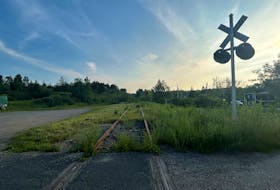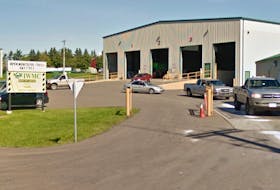Nova Scotia’s growing population has become a point of pride for the provincial government, so it sneaks the line into statements and news releases with increasing regularity.
“This past year was one of impressive records and firsts in Nova Scotia. Our population reached an all-time high,” read the fall Throne Speech. The government currently estimates Nova Scotia’s population at 964,700.
A slightly deeper dive into Nova Scotia’s population statistics tells the familiar tale of two provinces. The mass of immigrant settlement and population growth is in Halifax County, while most of the rest of the province suffers from a declining population.
Of the province’s 18 counties, 13 endured a population decline during the year that ended July 1, 2017, and of the five that did not contract, only Halifax recorded growth of more than one per cent. Outside Halifax, the province experienced a population loss of 0.3 per cent in that year.
Plus, Nova Scotia has a lot of ground to recover. Statistics Canada reports that in the decade 2007-17, Nova Scotia experienced the second weakest population growth among provinces and territories. At two per cent, it was just ahead of New Brunswick’s 1.9 per cent.
The nation’s population grew by close to 12 per cent over that decade, to 36.7 million. Alberta led all provinces with a 22 per cent increase in its population. Among other provinces, British Columbia recorded population growth of 12.3 per cent; Quebec, 9.1 per cent; and in Atlantic Canada, P.E.I. led the field by a country mile, with 10.4 per cent growth in population over the decade. Newfoundland and Labrador’s population increased by 3.9 per cent.
Again in Nova Scotia, the 10-year population trend reflects the great divide between HRM and the rest of the province.
While Nova Scotia’s population grew by just two per cent, the population of the Halifax Regional Municipality (HRM), which encompasses all of Halifax County, increased by 11 per cent between 2007 and 2017.
In the year ending July 1, 2017 — the most recent county-by-county population numbers posted on the provincial Finance Department’s statistics pages — Halifax scooped up six of every seven newcomers to the province. More than 3,700 new Nova Scotians settled in HRM, compared to just 639 across the rest of the province.
All these population statistics merely confirm the story many Nova Scotians know all too well. The trends bring the future into focus.
This is a province with two distinct realities. In and near the capital city there is growth — economic and demographic. Beyond the reach of HRM’s relative prosperity, rural communities and small towns are slowly emptying out because there isn’t enough work to keep folks there.
The public policy question is whether this market-driven trend should continue unabated, or should greater efforts be made to stem the receding population in rural and small-town Nova Scotia?
Nova Scotia’s Immigration Department notes that programs like the Atlantic Immigration Pilot seek to balance immigrant settlement more evenly between rural and urban areas, but the numbers are too small to reverse the rural population drain.
HRM’s economic renaissance is multifaceted, yet the cornerstone of the capital city’s economy remains the public sector. The provincial government is centralized in Halifax and the federal presence in Nova Scotia is in the city, most visibly reflected in the military.
Nova Scotia’s one-term NDP government dabbled in decentralizing government jobs to other parts of the province in an effort to spread the economic benefits of government more equitably. The effort was limited and the results were mixed.
Kings North Tory MLA John Lohr made the economic revitalization of rural Nova Scotia a central theme in his unsuccessful campaign for the provincial PC leadership. The businessman-farmer lamented the waste of unused farmland in Nova Scotia.
He also advocated lifting the moratorium on fracking to create jobs and inject some needed cash into rural communities.
While you may disagree with some of his ideas, Lohr is one of the few politicians in the province who stays focused on economic renewal in rural Nova Scotia.
The population trends tell us all we need to know. If Nova Scotia communities that lie beyond the reach of HRM’s economic fallout are to survive, we need more folks who, like Lohr, think long and hard about ways to revive the rural economy.









